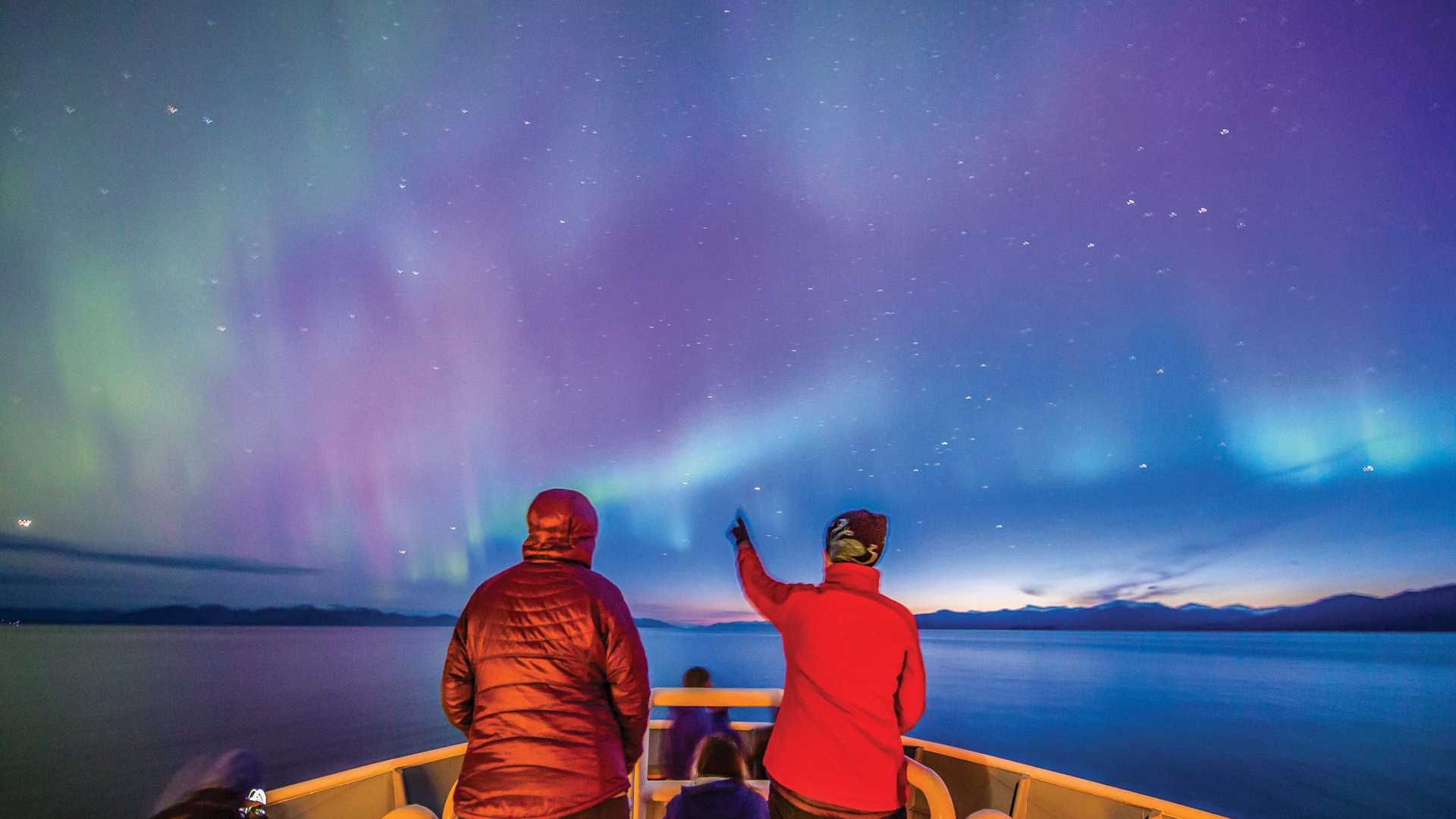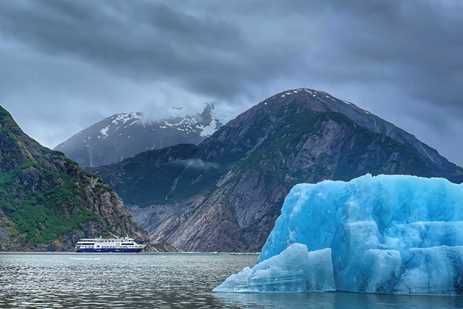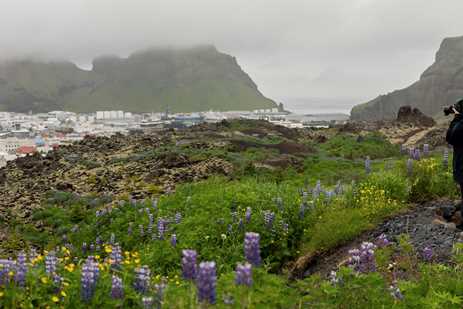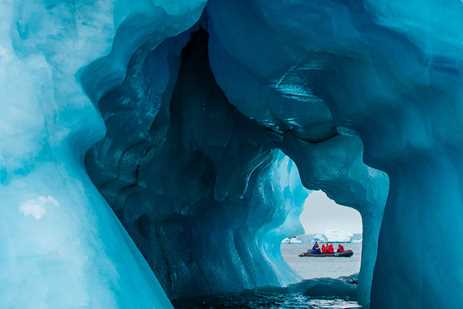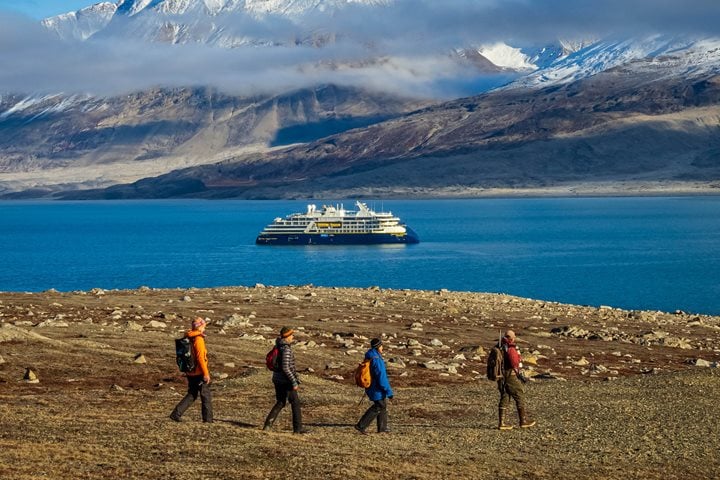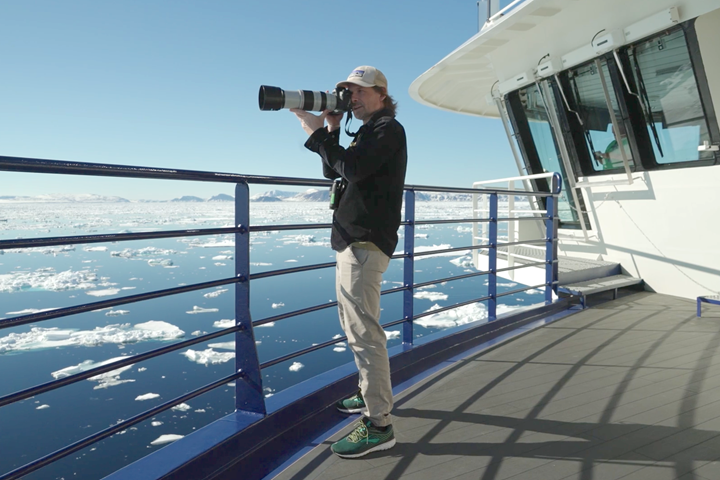Witnessing the aurora borealis, a glorious natural phenomenon that ignites the sky with shimmering incandescent light, ranks high on many a traveler’s bucket list.
Growing up in rural Alaska, Assistant Expedition Leader Adrienne Bosworth was privileged to experience the northern lights countless times.
“I knew when the phone rang hours after my bedtime that the local aurora phone tree was in motion,” she recalls. “My parents would wake up my brother and I, stuff us into snow suits, and we would trundle together into the night. I usually had premium views perched on someone’s shoulders or the cold metal cab of a truck.”
Get Inspired by Photos, Videos, Webinars, Stories, and Exclusive Offers.
Sign Up
Working for Lindblad Expeditions and seeing the aurora from the ship in faraway waters reminds Bosworth how lucky she was to have had the lights as childhood companions. Over the years, Bosworth has developed a deep well of knowledge about the subject. “Watching the aurora borealis is nothing like watching fireworks, it is so much bigger,” she says. “It feels like a window into the cosmos, like something more alive than stars. It makes me feel tiny, unimportant, and because of that quite happy.”
Read on as Bosworth prepares you for your own magnificent encounter with this technicolor marvel.
What is the aurora borealis?
Aurora borealis is the phenomenon in which colorful blazes of incandescent light play across the northern sky. When nights are dark and clear, researchers, tourists, and laborers from Alaska to Finland, Nunavut to Siberia, may look up from their routines to see ghostly streamers flickering among the stars.
Perhaps slightly less well-documented than our northern lights—aurora borealis—is their twin, aurora australis. This spectacle is the corollary lightshow in the far south. True mirrors, there is very little difference between the two occurrences, except their home territory.
Where can people observe this phenomenon?
Aurora borealis is a phenomenon born of the high northern latitudes, common in Arctic and sub-Arctic regions. Unlike a squall or a downpour that might affect only a discrete area, aurora occurrences are wide ranging—they can often be seen simultaneously from mountains and sea, cities and remote beaches. Although light pollution from large settlements can impede the clearest views, the best show I have ever seen was from a taxi in downtown Reykjavik in Iceland. My driver barely glanced up as naturally neon lights blazed above the port. Being on a ship at sea, however, is the ideal place to see the aurora, with few lights and massive swathes of horizon adding to the scale and intensity.
What causes the aurora borealis?
Explanations of the aurora are as dauntingly technical as the light shows are fantastical. Terms like “solar wind” and “geomagnetic storm” evoke science fiction plots of interdimensional travel and revised laws of physics. In the simplest terms, the aurora is a reaction between the atmospheres of the sun and Earth. The searing heat of the sun flings charged particles out of its orbit with a force that carries them towards the Earth. Our planet’s magnetic field coalesces around the poles, and when rogue solar particles come into contact with the field they are channeled to the far north and far south. In polar regions, these clouds of solar detritus collide with the gas of our upper atmosphere, and those collisions paint the sky.

